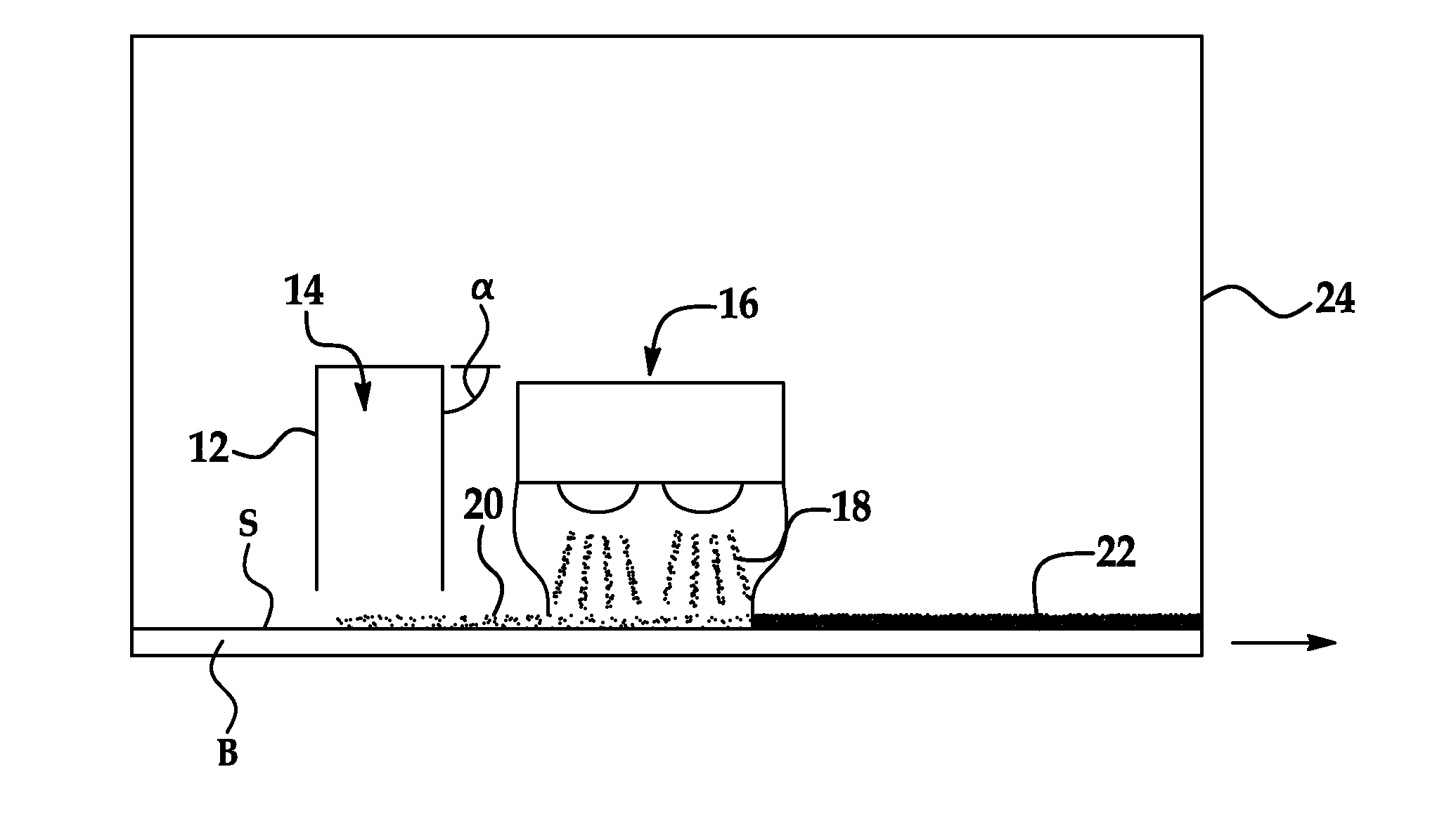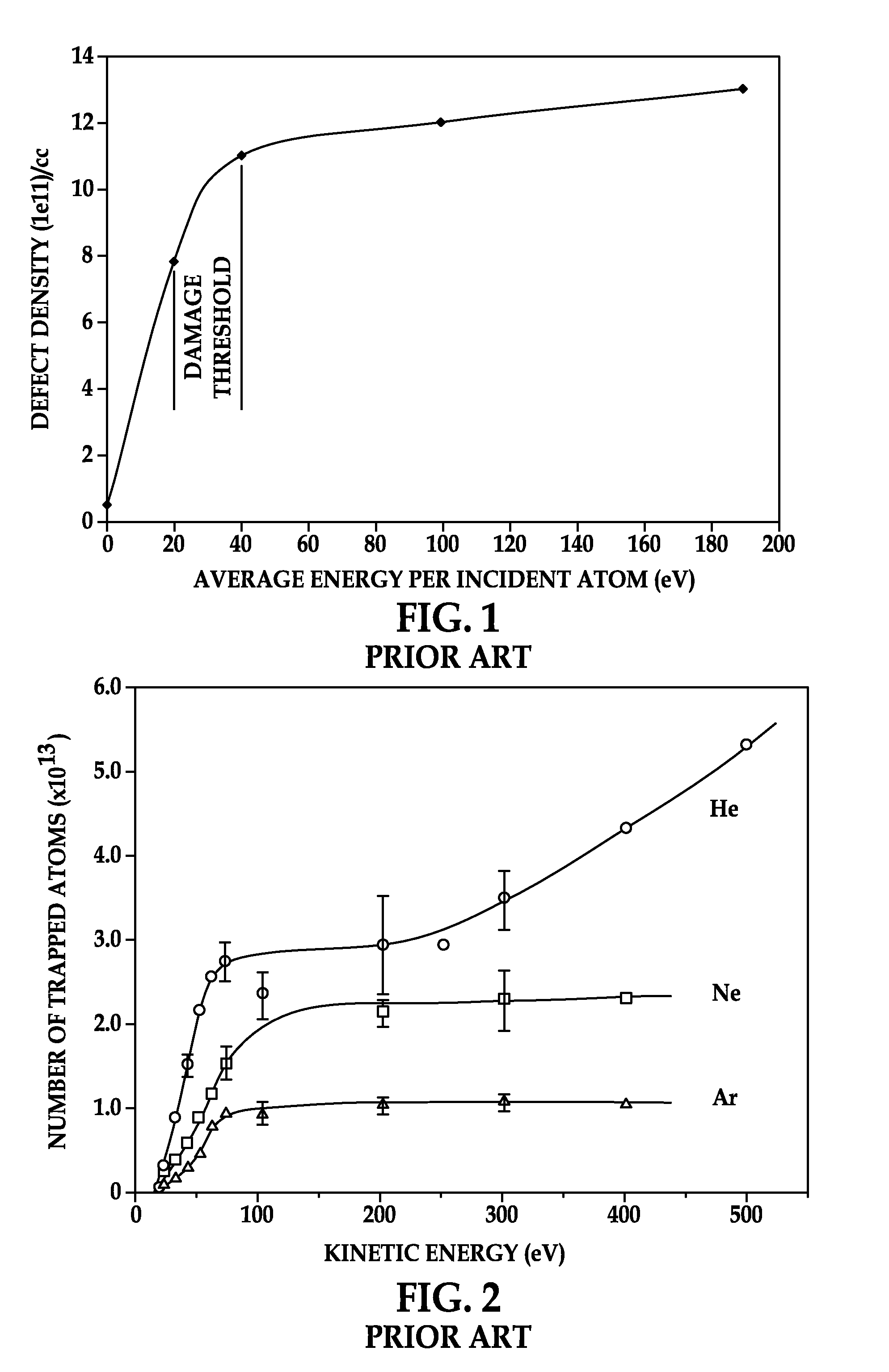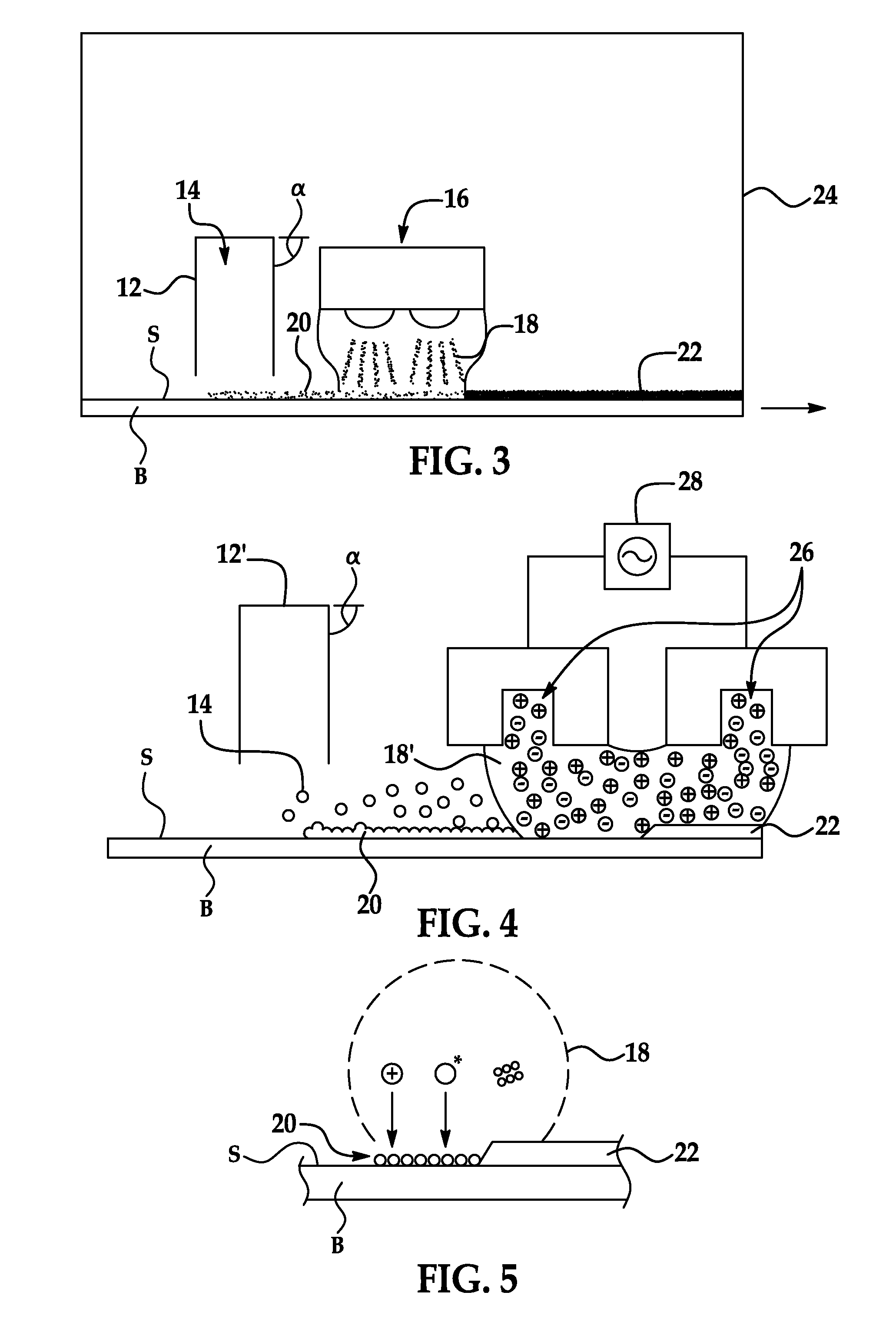Deposition of thin films on energy sensitive surfaces
a technology of energy-sensitive surfaces and thin films, applied in chemical vapor deposition coatings, coatings, plasma techniques, etc., can solve the problem of limited surface damage by kinetic ions
- Summary
- Abstract
- Description
- Claims
- Application Information
AI Technical Summary
Benefits of technology
Problems solved by technology
Method used
Image
Examples
Embodiment Construction
[0011]The present invention has utility in plasma deposition of thin films. According to the present invention, damage to sensitive surfaces is inhibited by a chemical modification to the sensitive surface before it encounters the plasma volume OF a plasma deposition process. This chemical modification utilizes surface chemistry and gas phase kinetics to deposit adsorbate molecules with a surface coverage sufficient to limit damage to the energy sensitive surface. The ability of the adsorbate to limit penetration to the underlying substrate surface is dependent on the mass of the incident species, incident species translational velocity vector, and the chemical and physical characteristics of the adsorbate.
[0012]As used herein, a “monolayer” is defined as greater than 30% areas coverage and single layer of closed packed molecules. This term is used herein relative to the terms of a “sub-monolayer” denoting equal to or less than 30% surface coverage as measured by BET; and “multiple ...
PUM
| Property | Measurement | Unit |
|---|---|---|
| threshold energy | aaaaa | aaaaa |
| thickness | aaaaa | aaaaa |
| time | aaaaa | aaaaa |
Abstract
Description
Claims
Application Information
 Login to View More
Login to View More - R&D
- Intellectual Property
- Life Sciences
- Materials
- Tech Scout
- Unparalleled Data Quality
- Higher Quality Content
- 60% Fewer Hallucinations
Browse by: Latest US Patents, China's latest patents, Technical Efficacy Thesaurus, Application Domain, Technology Topic, Popular Technical Reports.
© 2025 PatSnap. All rights reserved.Legal|Privacy policy|Modern Slavery Act Transparency Statement|Sitemap|About US| Contact US: help@patsnap.com



